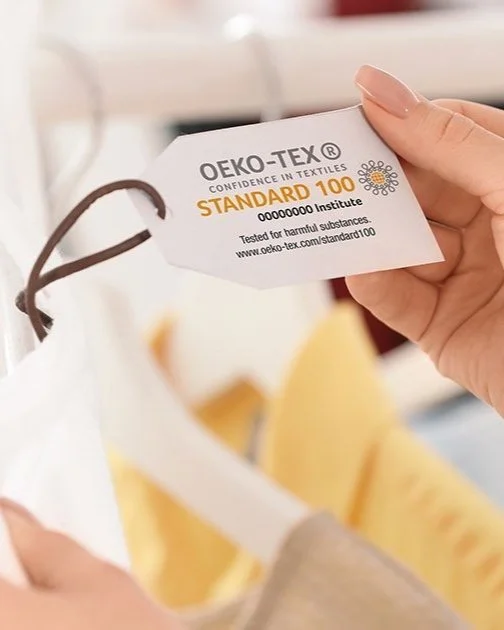Understanding Your Mobile Phone's Carbon Footprint and Ways to Minimize It
The Carbon Footprint of a Smartphone & How to Minimize It
Smartphones are essential everyday tech that we cannot imagine our lives without. From work to play, these faithful gadgets help us achieve our goals, keep us company, and connect us with what we find worthwhile.
Yet, these devices have a devastating impact on the environment. From how we make them to how we use them, they consume Earth’s finite resources with every notification and every charging cycle.
The average carbon footprint of a smartphone is 57 kg of carbon dioxide equivalent (CO2e). To put it into perspective, it is similar to:
Driving a car for approximately 1000 kilometers
Leaving a 30-watt light bulb on for about four years and two months
Flying a passenger plane for about 180 kilometers
What does Carbon Footprint mean?
Carbon footprint is the measure of carbon dioxide produced and released into the atmosphere due to any activity by an individual or entity. Everything we do releases CO2. From major culprits like burning fossil fuels to something as simple as cooking a meal or charging your smartphone.
Global smartphone charging produces 8,088,324 tons of carbon dioxide equivalent (CO2e) yearly. For perspective, that is roughly equivalent to 101,104,050 passenger flights.
Carbon footprint in mobile phone manufacturing
Going by the amount of advice available online for consumers to curb their smartphone use or make it more efficient, you would think they are the problem. The truth is that about 80% of all carbon emissions generated in a smartphone lifecycle happen during the manufacturing stage.
Apple iPhone Pro Max has a carbon footprint of 73 kg — 79% of it happens during production.
Huawei HONOR 20 Dual SIM model has a carbon footprint of 64.1 kg — 85.22% of it happens during production.
Samsung Galaxy S23+ has a carbon footprint of 58.8 kg — 83.7% of it happens during production.
It is important to note that carbon footprint rates can vary significantly from one device to another, even with the same manufacturer and across various regions. That is because hundreds of different parts go into making one, and consumer usage can vary greatly.
If you are attempting to reduce the carbon footprint of your smartphone, check with the manufacturer, entering your device model number.
5 Ways to reduce the carbon footprint of your phone
While it is true that manufacturers are responsible for producing the bulk of greenhouse gas emissions during a smartphone lifecycle, does that exonerate the user masses?
Hardly. Earth has given up so much (perhaps unwillingly) to produce a single smartphone. As someone who has bought that device, you are responsible for using it with intention.
Below are five simple but efficient ways to reduce the carbon footprint of your phone and give some love back to Earth.
Use your phone for as long as possible
Extend your phone life for as long as you can. Instead of upgrading your phone after 2-3 years, think of usage optimization to get the most value out of each device. Some hassle-free ways include protecting your phone body and screen. Screen protectors and phone cases can keep your phone from damage in case of falls and routine scratches.
Refreshing your phone wallpaper, changing icon sets, and trying out a new launcher are ways to look at your phone as if it is new.
And if you are replacing your phone because the hardware cannot keep pace with the software, know that manufacturers release the latest models with very few useful updates. If your phone operating system is three years old, installing the latest update is much more economical than buying a new phone.
2. Charge your phone efficiently
Do not deplete your phone battery or overcharge it. The ideal charge is between 20-80%. Put it on charge before it hits 20%, and stop charging when it reaches 80%. Overnight charging is a strict no-no. It will damage your phone battery life and require more frequent charging cycles, increasing the damage further.
Also, leave the phone alone while it is charging. Charging heats your phone, and using it in that condition damages your phone and battery health. Plus, avoid using wireless chargers. They also produce lots of heat and may damage the phone in the long run.
3. Shut down notifications and optimize phone storage
Phone storage and performance glitches are a few other reasons people go for phone upgrades. To ensure your phone lasts long, shut off all unnecessary app notifications. Go to your phone system and app settings and turn off notifications for apps that run in the background.
While you are there, notice if any apps consume more power than most. If you do not want those apps running in the background, shut them off. You will be able to access them by launching them anew. Plus saving battery life in the meantime.
Optimize phone storage by syncing your data with cloud storage. Images, videos, and other multimedia that you don’t need on your phone can be deleted after shifting them to the cloud.
4. Donate or recycle the old phone
When your phone has outlived its use for you, donate it so it can continue serving another user. Phones that have seen light use for social media or video streaming may help a small family bridge the digital gap. It may help a student enjoy a more stable connection with their school and thus continue being useful.
Broken, damaged, or used-beyond-repair phones should be properly recycled. A local e-waste recycling company can help you get rid of your mobile phone more sustainably and ethically. Contact one that provides transparent recycling processes, so you know you can trust them.
5. Choose a model with a lower carbon footprint
When it becomes clear that buying a new phone is the only way out, go on and splurge on the thing while still being mindful. There are two ways to choose a new phone with a lower carbon footprint.
Buy a recycled or refurbished phone if it has all the specifications you need. You will be saving the environment and your money doing it.
Buy a brand-new phone made with materials that are recycled or refurbished. That will ensure you are not buying something that has necessitated new mining and is, therefore, gentler for the planet.
Conclusion
Everything we do impacts the environment and the resources we consume. Smartphone usage, while necessary, creates a large carbon footprint that we can minimize by being more intentional. Deciding to use our devices for longer and not replacing them on impulse is one way to do that.
Using the battery with care, installing a screen protector, and shutting off unnecessary notifications are a few others.
And when your smartphone truly reaches the end of its use for you? Send it to the next leg of its journey by donating it to someone who can still get more value out of it. For smartphones that have outlived their use, however, the right thing to do is contact a local recycler and say a final goodbye to your loyal machine.
Hummingbird International, LLC offers top-quality e-waste management solutions to businesses, corporate groups, commercial entities, and the residential sector. With over a decade of experience in the field, they excel in e-waste disposal, recycling, computer upgrading, dispatch, and making electronic items reusable. Their e-waste collection services are currently available in major regions in the US. Click here to learn more.
MAKE SURE TO PIN THE PHOTO BELOW TO SAVE THIS POST FOR LATER!
WANT TO FIND SUSTAINABLE BRANDS? VISIT OUR BRAND DIRECTORY!
Our Brand Directory is home to hundreds of sustainable brands, from makeup to cleaning supplies, from underwear to shoes. We have broken everything down by category for easy shopping, along with discount codes unique to Sustainably Chic viewers.


































